Cold Brew vs. Iced Coffee: What’s the Difference?
When choosing between cold brew and iced coffee, you might wonder what sets them apart. At first glance, both are chilled and refreshing, but their brewing methods and flavors offer distinct experiences. Cold brew coffee is made by steeping coarsely ground coffee beans in cold water for an extended period, usually 12 to 24 hours. This method results in a smoother, less acidic taste with a naturally sweet profile. Meanwhile, iced coffee, brewed with hot water and then cooled, has a brighter, more robust flavor. Considering the nutritional aspect, iced coffee nutrition may vary based on additives like milk or sweeteners, giving you flexibility in calories and flavor.
Understanding Cold Brew & Iced Coffee
Cold brew and iced coffee are distinct beverages, each offering a unique taste experience rooted in different preparation techniques. Cold brew coffee is crafted through a slow method where coarse coffee grounds are steeped in cold water for an extended period. This process extracts flavors gradually, resulting in a smooth, less acidic profile that many find refreshing and mild.
In contrast, iced coffee begins its journey with hot brewing. Once brewed, it is cooled before being served over ice. This method preserves the traditional, robust coffee taste you might recognize from a typical hot brew, offering a vibrant and slightly more acidic flavor experience.
For example, consider how popular coffee chains, like Starbucks, utilize these techniques. Starbucks offers cold brew coffee for those seeking a smoother experience, while their iced coffee caters to those craving a classic taste. Both methods offer a refreshing beverage option with distinct qualities based on individual preference.
In exploring iced coffee nutrition, it’s essential to consider how the beverage's profile changes with added ingredients. A base iced coffee is low in calories, but additives like cream, milk, or sweeteners can significantly alter its nutritional content. This flexibility allows you to customize your iced coffee experience to fit dietary needs or taste preferences.
Understanding these differences allows you to choose based on what you desire. Whether you favor the subtlety of cold brew or the pronounced flavors of iced coffee, each type can be tailored to suit your palate and nutritional choices.
Key Differences Between Cold Brew and Iced Coffee
Brewing method stands out as the primary distinction between cold brew and iced coffee. Cold brew coffee requires a slow, immersive process taking 12 to 24 hours, resulting in a smooth and naturally sweeter flavor. In contrast, iced coffee undergoes a quicker, traditional hot brewing method before being cooled, leading to a bolder, sharper taste.
Taste and acidity also differentiate these two beverages. Cold brew is less acidic, making it gentler on sensitive palates and stomachs, with a mellow, caramel-like flavor. Iced coffee, with its bright and bold taste, retains more acidity, offering a vibrant coffee experience reminiscent of its hot counterpart.
Looking at these coffee styles through the lens of brewing philosophy, the choice depends on personal preference. Cold brew caters to those who appreciate a gentle, soothing coffee experience, while iced coffee appeals to individuals who enjoy the conventional robustness of freshly brewed flavors. Both cater to varying palettes, each with its unique artistry.

Health Benefits of Cold Brew and Iced Coffee
Cold brew and iced coffee each bring unique health benefits to the table, influencing your choice based on personal wellness goals. Cold brew coffee's smoother, less acidic profile makes it a favorable option for those with sensitive stomachs. Its lower acidity levels are easier on your digestive system, potentially reducing indigestion risk that some experience with traditional hot brews.
The antioxidants present in both cold brew and iced coffee contribute to their health appeals. These compounds help combat free radicals, potentially reducing inflammation and supporting overall health. Additionally, caffeine found in both can enhance mental alertness, providing a cognitive boost to kick start your day or power through an afternoon slump.
Considering iced coffee nutrition, it offers flexibility in managing calorie intake. By choosing unsweetened versions or low-calorie sweeteners and plant-based milk alternatives, you can control its nutritional content to better align with dietary goals. This adaptability appeals to those mindful of caloric intake or dietary restrictions.
One unpopular opinion about iced coffee highlights its tendency to be calorie-heavy when laden with syrups and creams, potentially undermining its health benefits. By moderating these add-ins, you can enjoy its refreshing qualities while maintaining a healthier profile. Balancing taste with nutrition becomes key in maximizing the benefits.
Ultimately, your preference between cold brew and iced coffee may depend on specific health goals and taste desires. Each offers a distinct experience, allowing you to enjoy your coffee ritual while potentially supporting well-being. Understanding these benefits allows you to make an informed choice that matches your lifestyle and nutritional needs.

Which is Better for Your Taste Buds
Deciding between cold brew and iced coffee for your taste buds largely depends on what flavors you crave. Cold brew coffee is renowned for its smooth, mellow taste. The longer brewing process extracts natural sweetness and minimizes acidity, offering a gentle coffee experience perfect for those who appreciate subtlety.
If you prefer a vibrant and bold coffee taste, iced coffee might be your choice. The hot brew method retains the aromatic profile, delivering a robust and slightly acidic kick. This traditional taste appeals to those who enjoy the classic, fuller-bodied coffee experience, whether enjoyed plain or with their favorite syrups.
In the next few years, it is likely that cold brew coffee will increase in popularity as consumers seek smoother and less acidic coffee options. This trend will flourish as coffee enthusiasts explore less conventional flavor profiles and diverse brewing techniques, appealing to a younger, experimental market.
Ultimately, what matters most is how these beverages satisfy your taste buds. Whether you lean toward the soothing notes of a cold brew or the spirited character of iced coffee, each has its own unique merit. Exploring both allows you to find a preferred flavor profile that excites your palate and complements your personal taste.

Popular Recipes for Cold Brew and Iced Coffee
Exploring popular recipes for cold brew and iced coffee can elevate your homemade coffee experience. Cold brew coffee can be easily crafted at home by steeping coarsely ground beans in cold water for about 12 to 24 hours, then straining it. Many enthusiasts add a splash of vanilla or a hint of cinnamon to bring out complementary flavors, creating a refreshing and aromatic beverage.
For iced coffee lovers, a simple recipe involves brewing a strong batch of hot coffee and allowing it to cool before serving over ice. Sweeteners or flavored syrups can be integrated for those who enjoy experimenting, making it a versatile canvas for creativity. The quick preparation time of iced coffee makes it a convenient choice for busy schedules.
On one hand, some coffee aficionados see cold brew as a sophisticated choice due to its smooth flavor profile and brew time indicating dedication, while others argue that iced coffee offers a bolder experience that stands up to adventurous mix-ins. Each perspective believes in its own approach, showing how you can tailor your coffee experience.
Ultimately, your choice between crafting these beverages comes down to what your taste buds desire—whether it's the gentle embrace of cold brew or the bold delight of an iced coffee. Embracing each recipe allows you to indulge in diverse flavors and keep your coffee routine exciting and fresh.
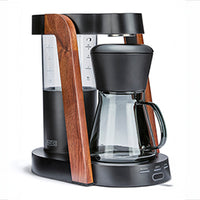 Ratio Eight S2
Ratio Eight S2
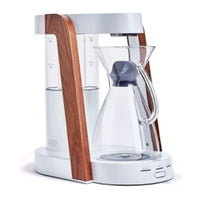 Ratio Eight Original
Ratio Eight Original
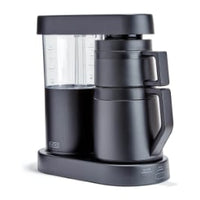 Ratio Six
Ratio Six
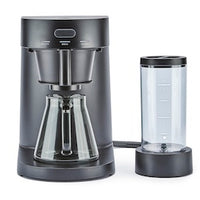 Ratio Four
Ratio Four
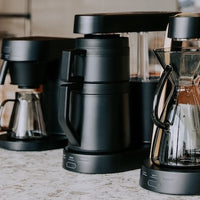 Compare Machines
Compare Machines






